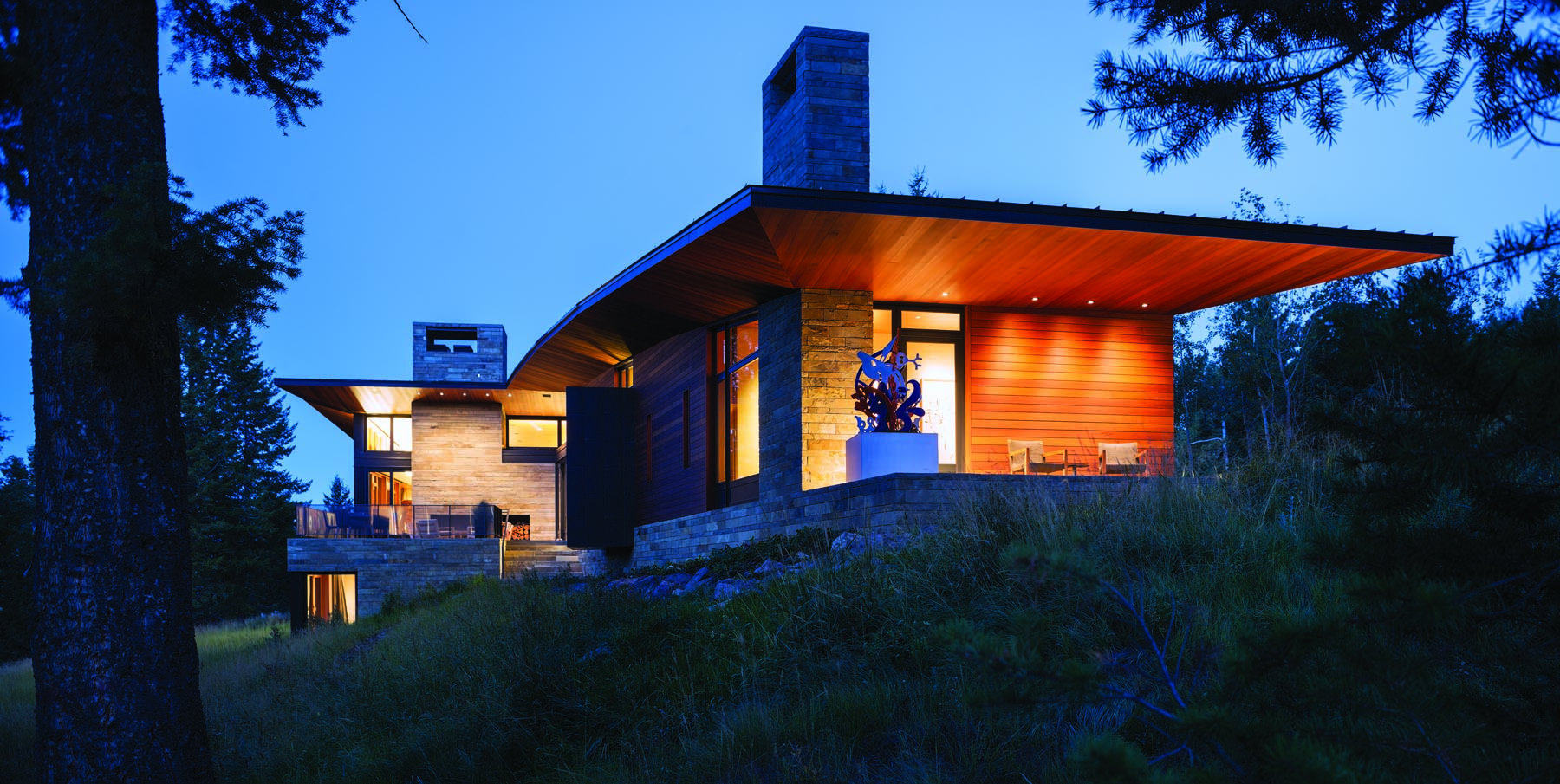
26 Aug Art In Architecture
THE ENTRANCE TO THE HOME’S driveway is past the house, not that you notice you’ve passed a house, it’s so well blended into the landscape. Finally turning into the driveway off the steep main road, it meanders slowly north through a well-manicured aspen and pine forest. This is not a contrived trip, designed to create false drama, but a very purposeful one. “The house itself is an unfolding narrative that captures many different special moments,” says Andy Ankeny, AIA, associate and project architect with Carney Logan Burke. “We wanted the driveway to feel the same way.”
The driveway has its special moments — the lot it wends through is 35 unspoiled acres — but none compare to arriving at the home’s front entrance. A mandate from the owners was that the home have a “low-key, quality impression rather than ‘in your face’ drama.” But this entrance is the most dramatic I’ve ever seen. It’s a subtle, sophisticated drama, but drama nonetheless. Juxtapositions — of the soft east-west arc of the entire roof with the defined angles of an entrance arch; of cedar siding glowing a strawberry blonde and dark zinc panels; and of Montana sandstone, both underfoot and cladding part of the house, with snaggly Teton views — intrigue and grab you. It’s not just the home’s roof system, which project engineers had to accommodate 14-and-a-half-foot overhangs, that has never before been seen or built here.
Walking inside, a wall of glass — sliding doors, actually, that open directly to one of several terraces that seem to hang in the forest canopy — greets you with macro and micro views: The Tetons rise in the distance while mature pines spot the foreground. The views from here are among the most unobstructed and expansive anywhere in the valley. “This site should be a national park,” says project design architect Eric Logan, a principal at Jackson-based Carney Logan Burke. “We’re looking down on the confluence of the Snake and Gros Ventre Rivers, at the Tetons, the Sleeping Indian, even into Yellowstone.” This house wasn’t designed around dramatic views though.
“We talk a lot about process at Carney Logan Burke and our greatest hits are a result of engaging the client,” Logan says. “These clients engaged us at a level we hadn’t seen before nor have we seen since. They showed up with very well developed thoughts of quantitative and qualitative aspects of what they wanted in the building. Touring the home with Logan, he shares a hardbound book of the project’s process. An early page has a list of mandates from the clients. There was the mandate about a low-key quality instead of “in your face” drama. Also the house must present a narrative of varied site conditions, views and light; create a series of experiences moving through the structure; bridge from traditional to contemporary; engender intimacy and warmth; and maximize enjoyment of time in Jackson. Simplicity, elegance and sophistication are terms that guided the design.
Then there was the art mandate. “They have an incredible art collection and wanted this house to showcase it,” Ankeny says. “We’ve worked with art collectors before, but no one with a collection like this.”
“We’ve been collecting contemporary art since the mid-1980s,” says one of the owners (it is a couple who owns the home). “Our collection is a little eclectic, but it is very personal. We’ve bought every piece together. The core is towards Abstract Expressionism and most of the art in this residence was done by artists we have known or have met.”
The owners “really made a commitment to making this their primary residence,” says Manhattan-based interior designer Timothy MacDonald, who had previously worked with the couple on a New York apartment. “The art here — they have a strong emotional attachment to all of it. They also had other pieces — rugs and several pieces of furniture that they have a history with and wanted us to incorporate into the home.” The owner says, “When we moved into this house, it was very nice to unpack all of the art crates. It was like welcoming old friends home.”
“This house, more than anything I’ve worked on in my 14 years doing this, is the true embodiment of what architecture is,” Ankeny says. “Artistry was the driving force behind the design and every decision.”
The home itself is art, a sculpture that engages and responds to its surroundings. “We dragged it around and pulled it apart so that we wouldn’t dominate the site and also so that we could capture different vignettes from the site.” There are big Teton moments through floor-to-ceiling windows — particularly in the main floor dining and living area. But there are intimate moments as well. “People have asked why we didn’t show the Tetons from every room” Logan says. “It’s more interesting if every view isn’t the same.”
The master bedroom looks out onto a meadow. “Focusing on the meadow gives the room a very quiet and serene environment,” the owner says. The kitchen could have a wall of Teton-framing windows, but instead glass is constrained and focuses east, toward the Sleeping Indian. “There were so many opportunities to create different vignettes,” the homeowner says.
“I can’t think of another project that I have done in my career that I’m as proud of,” MacDonald says. “It’s not really the contribution that [we] made, but the end result of everyone working together. The architecture, the craftsmanship and the energy and flawless taste of the owners combined to create a beautiful, artistic house the owners are so happy with. In the end, that’s what it is all about.”
- A Venini chandelier nearly two stories high hangs in the stairway between the main floor and guest quarters. “We knew this was part of the art program and designed an appropriate space for it,” says architect Eric Logan.
- “They were sweet to show us the pieces they were putting in this house and have our comments, but I don’t think it would have mattered too much what we said,” says interior designer Timothy McDonald. “Besides, their taste is flawless.”
- Natural light was incorporated throughout the home’s design.
- Springing from and returning to the topography of the site, the roof creates a sense of protective canopies that provide shelter.
- The kitchen exudes warmth while embracing clean, contemporary lines.
- The homes design seamlessly accommodates the homeowners extensive contemporary art collection.
- A warm site amid the snowy Jackson, Wyoming, landscape.




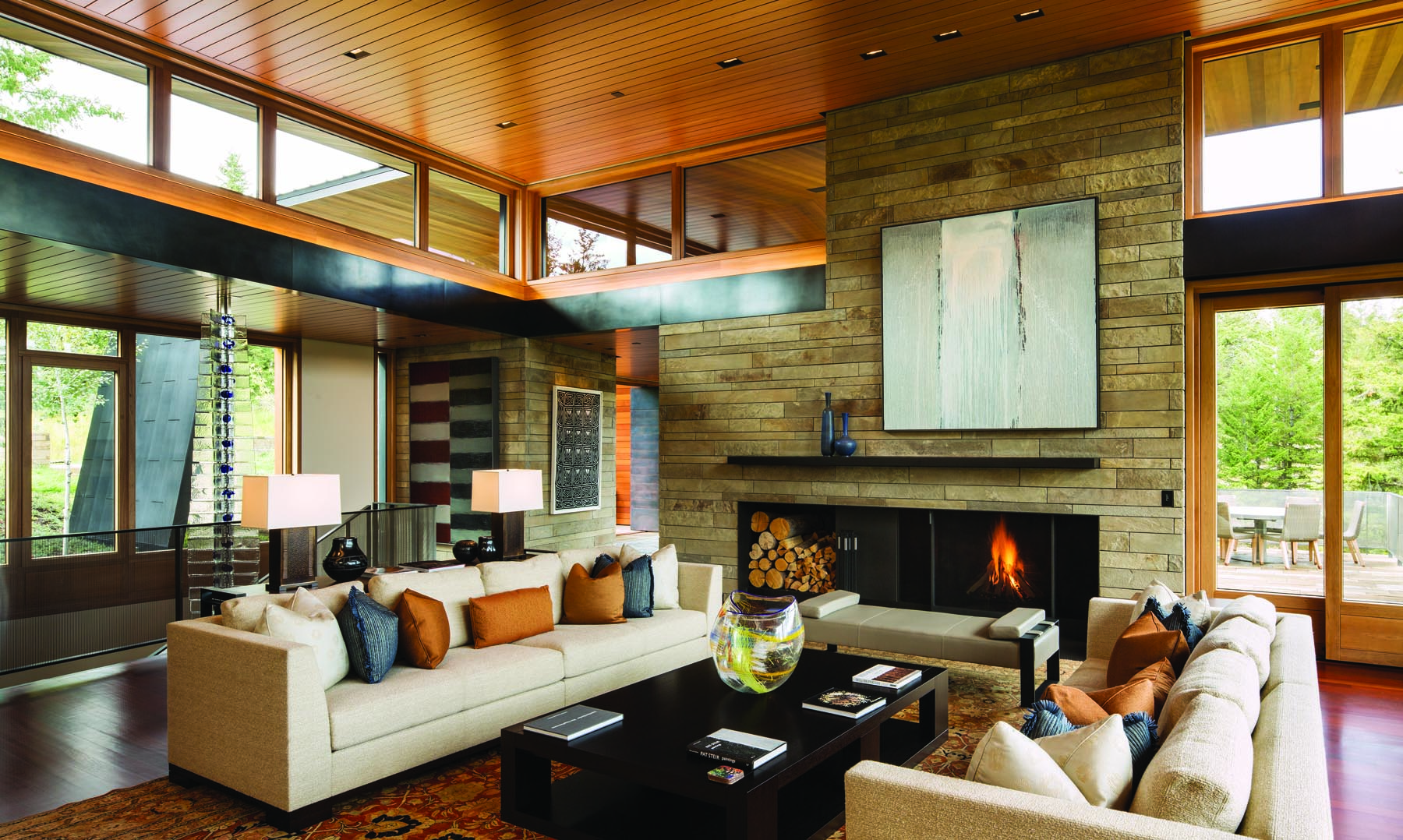
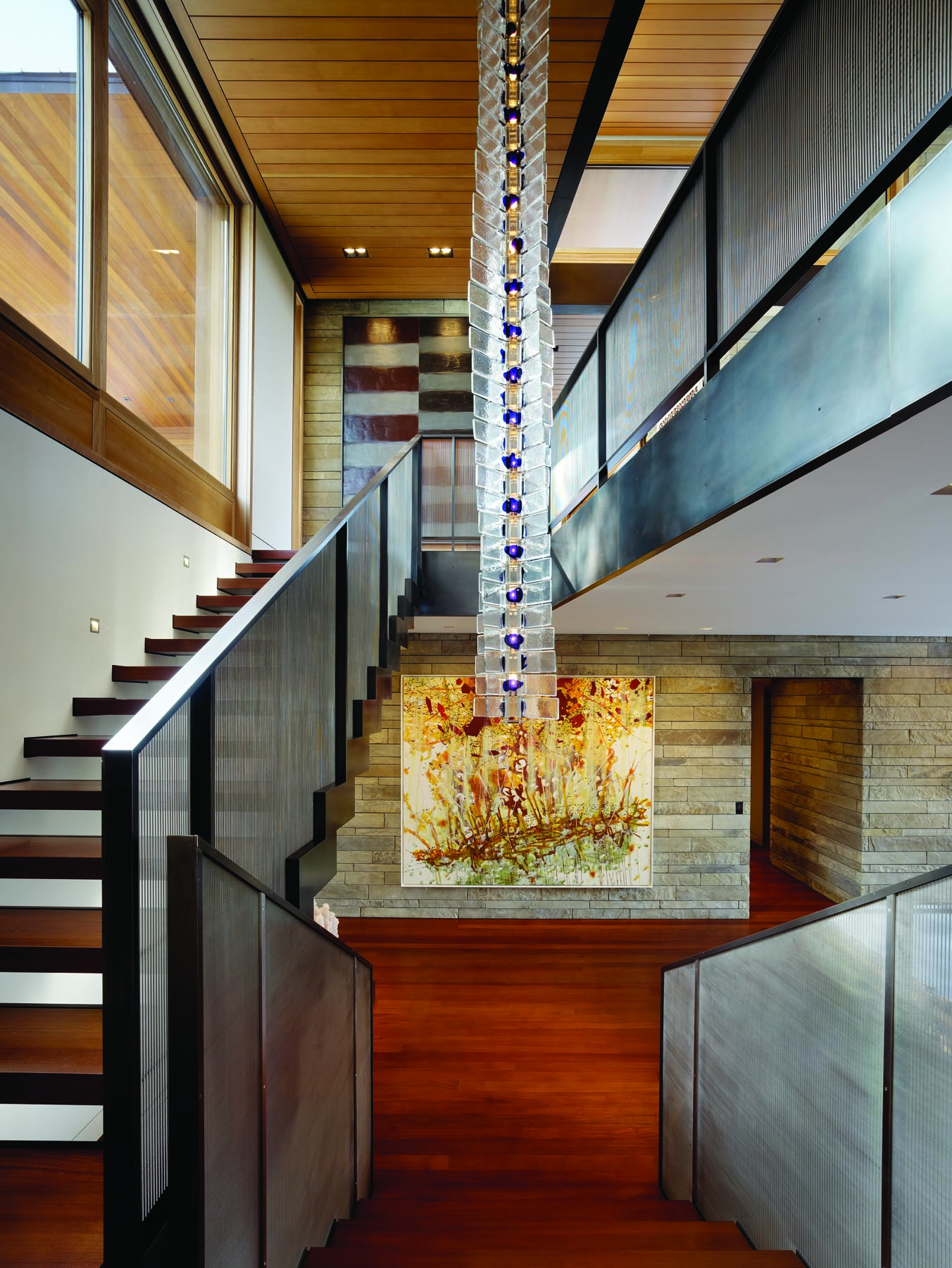



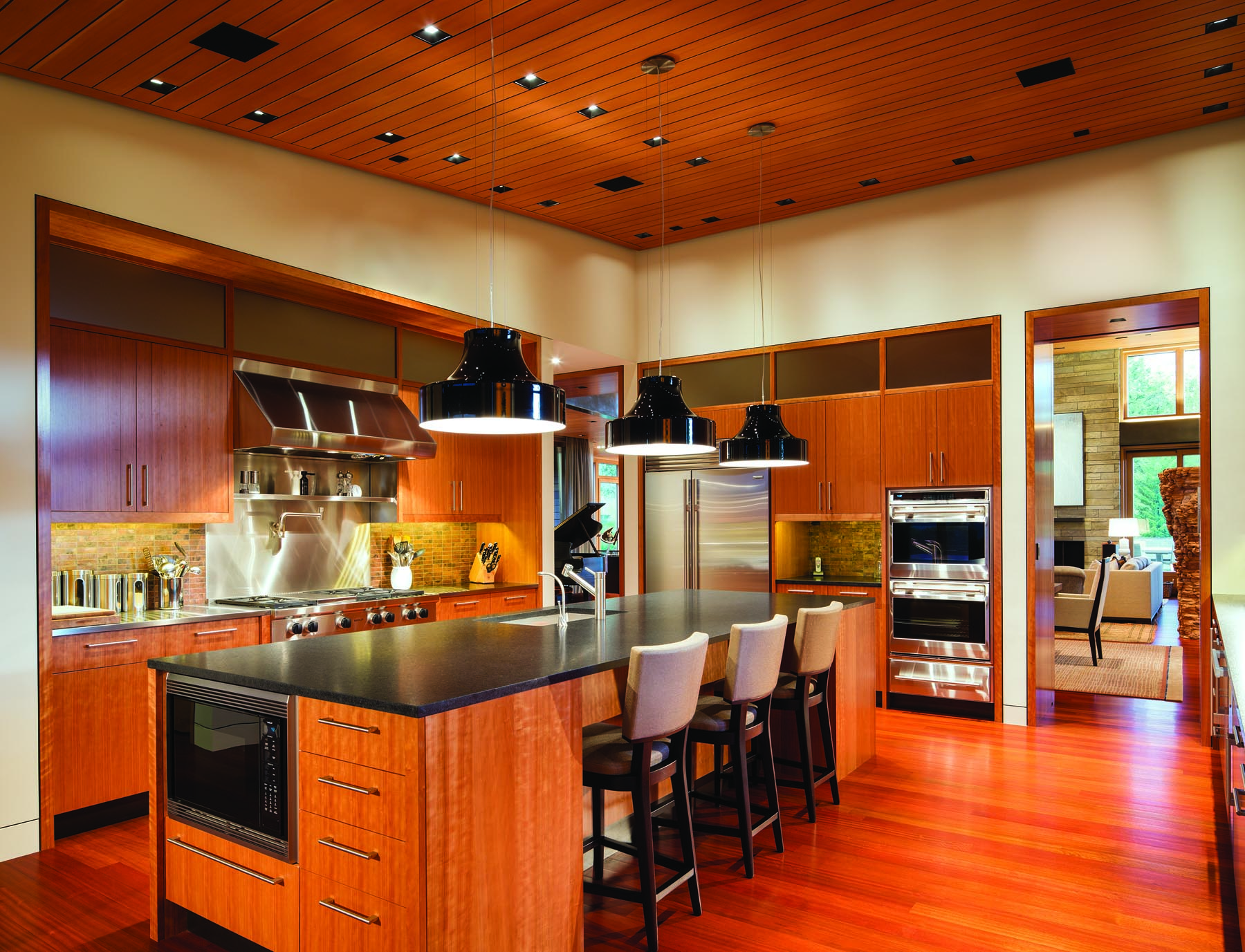
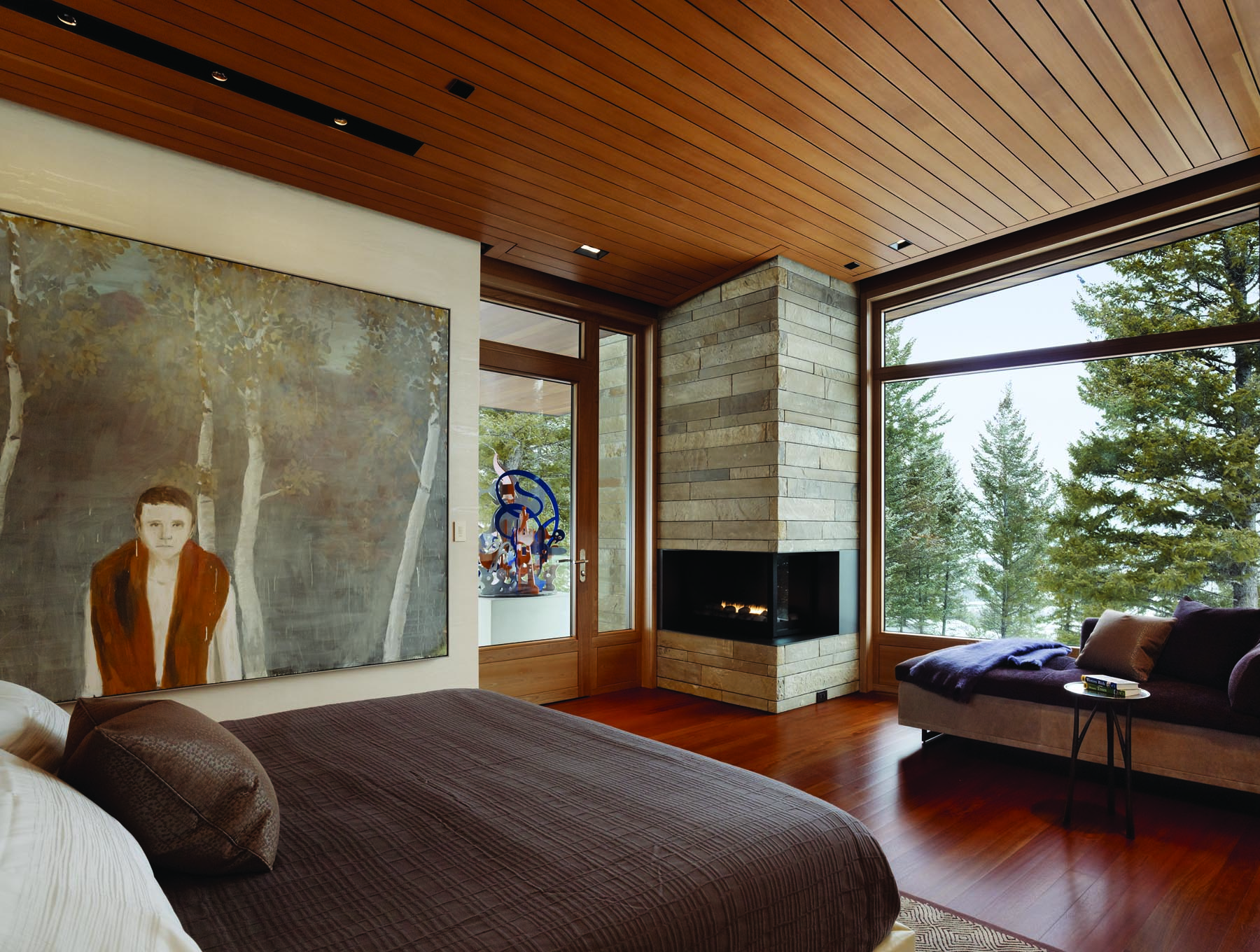

No Comments